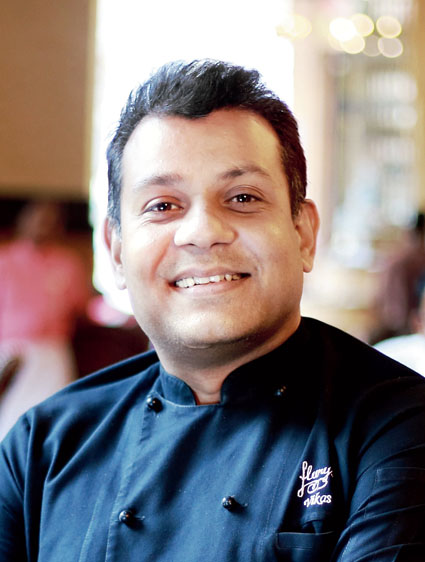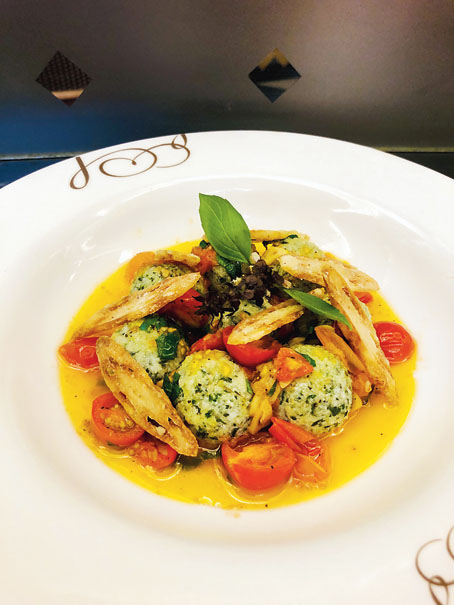Happy New Year! Most among us subconsciously and many rather vocally wanted to see the past year gone — and gone it has. In the classic ‘money can’t buy everything’ manifestation, we were bound to our houses or relegated to some form of coerced inhibition where we couldn’t celebrate the going away of 2020 as haughtily, although we really did want to. The world saw restaurants, bars and hotels, ones that traditionally prepare for months for New Year parties, wind down their truncated ops by 11.30 in the night, clubs famous for their year-ending lavish buffets and ballets for the last two centuries took it way easier and pretended they had a choice.
Personally, the year gone impacted me in myriad ways. The sheer frivolity of our existence and the ephemeral nature of life and activity exhibited itself on a daily basis. Somewhere between seeing a full-grown horse galloping on a deserted Park Street to seeing literally hundreds of full-grown centenarian trees uproot like young saplings, the year taught us lots of things. I was among the very, very few lucky ones that have travelled to work all through the lockdown, and I saw things I can neither unsee nor forget in a hurry. They are things that I would like to see again and again since I hadn’t ever seen them earlier, but, in all likelihood, will never again either. The year gone by, for all intents and purposes, went down as the most ‘memorable’ for all of us, if I were really penny-pinching words.
I was lucky to have written my columns all through the year and through them I was inadvertently chronicling the emotions of the times, which ranged from shock and uncertainty to despair and hope and, by extension now, to near normalcy. What I could also fathom was the unbridled love of people for food. While there certainly were the essential groceries, the procurement of which gave jitters during the initial phases of the lockdown, it gradually smoothened out and, for the most part, people had reasonable access to daily supplies.
What was surprising, to me at least, is how people understood the values of basic life skills and cooking came out topping the list. I used to get many emails from readers. Some thanked me while some asked for suggestions on how to hone their culinary skills to the next higher level from pure sustenance. The confined masses endeavouring to do something constructive turned to cooking as a true passion. Most associated with it at consumer levels but started to realise the true value and virtues of food. They realised that all or any food doesn’t cook itself and that while we might not have our cake and eat it too, we might just as well bake our cake and have it too.
My dear friend Sibendu had written an excellent trend story last week compiling the culinary trends of the year gone by. I wish him all the very best. I had written a similar story at the start of the last year and look how that turned out! Nonetheless, we all agree that hindsight is a wonderful thing but foresight is better. So without crying over spilt dalgona, and not really entering into specific dishes, let me put forward a few thoughts, with all the humility and sincerity at my disposal and being in the thick of the V-shaped upheaval in my vocation, towards which broad trends we might see as far as eating out is concerned.

Vikas Kumar
Myth of mealtimes
I had written about this earlier and I believe it a rather strong emerging trend where the thick lines defining the strict ‘dishes as per mealtimes’ concept is becoming more and more redundant. The fluidity between the dishes and preparations mean that more and more people are likely to want and get to eat whatever they want at whatever time of the day that they feel like. While ‘All-day breakfast’ and ‘Brinner’ (breakfast foods for dinner) are fast gaining popularity and momentum, breakfast steaks and nacho dinners are also getting around.
Basically, the adherence to the ‘accepted’ mealtimes and traditionally corresponding preparations is giving way to ‘as you like it when you like it’. According to a report on eater.com, more and more people are now choosing not to confine salads to lunch, cereals to breakfast and steak for dinners but are experimenting and apparently liking their selection since many popular lunch dishes such as salads and soups are increasingly becoming a popular breakfast choice.
Restaurant menus are likely to feature and account for this fluidity since it also makes sense for the restaurant chefs to have common ingredients for different meal periods, thereby helping create more precise menus and forecasting raw material consumptions better.

Culinary Celebrations
With the humongous increase in forced home-cooking all through the lockdowns and the overall ‘culinary creativity’ weariness, the diners now want to eat out and truly make memories out of it. Special-occasion dining looks to become that much more extra special with the focus on having a great overall experience that can be cherished for a long time since we all now know better than to not have a good time while we can. Food-wise, it means that chefs will endeavour to provide complete customisations with the use of exotic ingredients and create dining experiences that feel super special.
In my view, appreciating the little things in life, eating out included, has been a key takeaway from this entire lockdown episode and that is already evident in the number of patrons thronging restaurants, to relive the memories and to consciously create better ones. I think the denial of culinary extravagance in the past year will create a sustainable demand for gourmet, indulgent and curated food experiences. To that extent, destination dining, where people travel long distances just to enjoy food experiences, should also see a renewed focus and interest.
Regional Rise
With mass long-distance travel still a bit iffy and certainly not preferred by most, we should see a resurgence of regional cuisines since people will probably travel in their personal vehicles and will look to exploring their own local tourist sites, culture and cuisines. The knowledge and acceptance of our beautifully unique cuisines will see more and more people celebrating regional food diversities and indulging in experimental eating, especially of the forgotten regional cuisines which couldn’t somehow keep up.
Although the trend of hyper-regional cuisine was already gathering steam with more and more chefs creating food experiences with the local tastes, ingredients and food habits as inspirations, I believe that this will become stronger with the people travelling for leisure more but nearer. Attached to this is also the trend of local ingredients which will become more and more visible and emerge as a lasting trend. Although this trend is already visible globally, it is also quickly making inroads into India.
Full Flavour
The term ‘full flavour’ rather craftily refers to products that are made the way they are meant to. In essence, we don’t use margarine for butter, coconut oil for ghee, honey for sugar or zucchini strips for real spaghetti. There used to be a period in time where it was really trendy to try out dishes with substitutions, to make those ‘healthier’ sacrificing on the pure indulgence and the satiety. The year gone by has once again highlighted the values of responsible indulgences and that while we might choose to indulge less frequently, we should endeavour to get the best experience and not an underwhelming one owing to the substitutions in authenticity.
While obviously there is a merit and creativity in developing new recipes, especially towards providing healthier alternatives, in my view, the trend is of ‘splurging’ once in a while, whenever the opportunity presents rather than cutting corners and compromising on the real experience. To sum it up, while there will be takers for that odd coconut oil chocolate, fat-free ‘frozen desserts’ and turkey bacon, but, by and large, people will look out for the real deal, even if slightly expensive, though not textbook healthful.
A recipe
Wondering what to give out as a recipe for this rather unusual write-up, I could not but think of this dish which ticks all the right boxes of being ‘full flavour’, indulgent, regional (the dish comes from Tuscany in Italy) and also something that can be had any time of the day. I had this dish first in Italy and was surprised by the simplicity of its preparations. This dish was also a highlight of our Christmas menu this year and was one of the bestsellers. The addition of deep-fried lotus stem gives this dish the added crunch, cuts through all the richness of cheese and butter and is an original addition by me. Check it out.

Tuscan Spinaci Gnudi with drawn tomato butter,
TUSCAN SPINACI GNUDI WITH DRAWN TOMATO BUTTER, BASIL AND CRISPY LOTUS STEM
Ingredients:
Ricotta cheese: 100g
Parmesan cheese: 100g
Spinach: 200g
Onion: 20g
Garlic: 10g+10g
Semolina: 50g
Salt and pepper: As per taste
Fresh lotus stem: 100g
Corn starch: 10g
Butter: 100g
Cherry tomato: 25g
Fresh basil: 10g
Method:
Blanch the spinach and chop.
Separately saute the onion and garlic and mix with the spinach.
Add the cheeses, half the semolina and season well.
Make small balls and roll in the remaining semolina. Chill for a few hours.
Just before serving, blanch in salted simmering water for 1 minute or till the gnudi balls start to float.
For the sauce:
First clarify the butter by gently cooking it until the solids sink to the bottom, reserve.
Saute the sliced garlic until golden brown and crispy; this step is crucial for the success of this simple sauce.
Add the cherry tomatoes till they release their juices, add the clarified butter, add torn basil.
Finally, add the blanched gnudi balls and toss briefly, do not overcook.
Serve immediately with fried lotus stem. For making the fried lotus stem, cut into thin slant slices, coat in corn starch and fry over high heat until crisp, about 2-3 minutes.
Vikas Kumar is the executive chef of Flurys. You can reach him at vkumar@flurys.com










